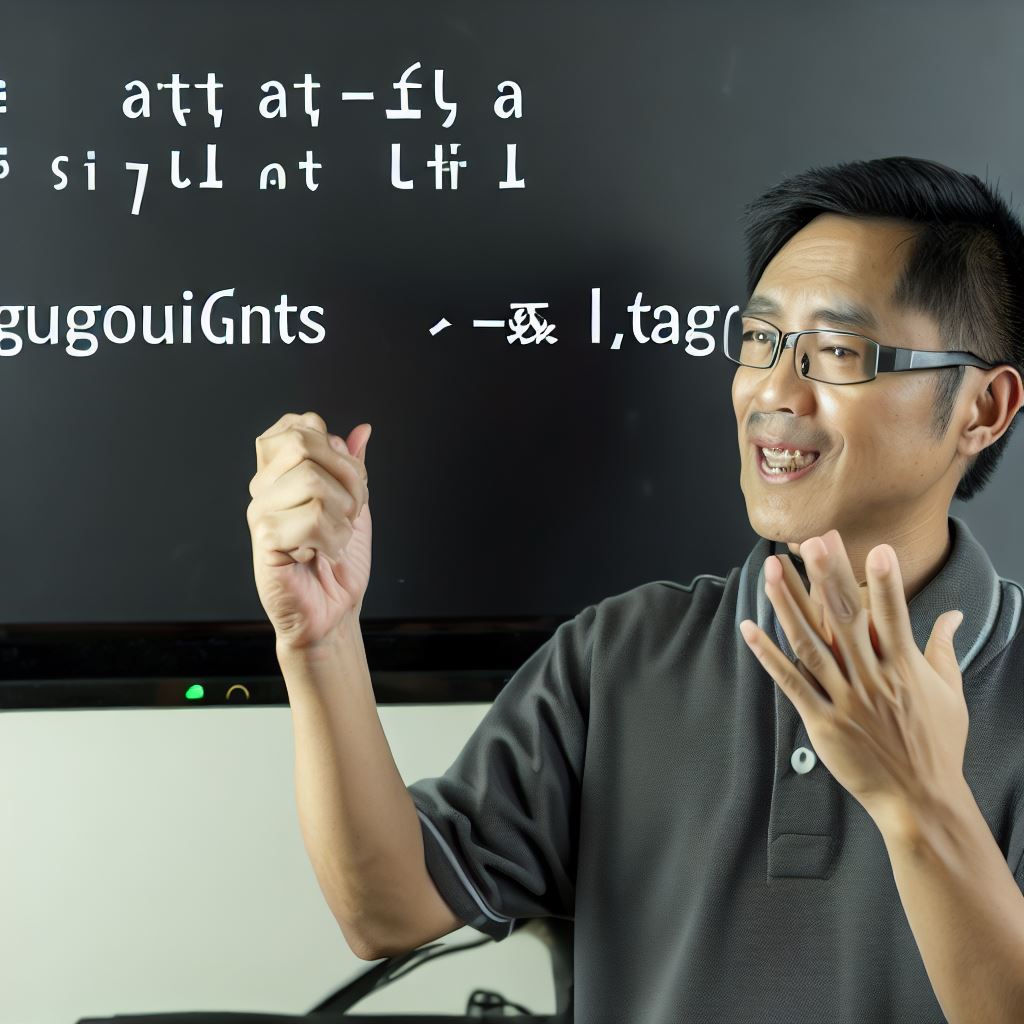Introduction
Ligatures in coding fonts are special characters that combine multiple letters into one, improving readability and aesthetics of code.
These ligatures play a crucial role in enhancing code legibility by eliminating the visual clutter caused by individual characters.
Aesthetic appeal is another important aspect of coding fonts as it creates a pleasing visual experience for developers.
Having beautiful ligatures in coding fonts not only makes code more attractive but also improves the overall coding experience.
One major advantage of ligatures is that they make code easier to scan and understand.
For instance, a ligature can replace the “==” operator with a single character, making it instantly recognizable.
With ligatures, code becomes more readable, reducing the mental effort required to comprehend complex logic.
Ligatures can also convey valuable information by visually depicting certain properties or concepts.
The incorporation of ligatures in coding fonts has gained traction in recent years.
A number of modern coding fonts, such as Fira Code, Cascadia Code, and Operator Mono, offer extensive ligature support.
These fonts have gained popularity among programmers due to their ability to improve code readability and aesthetics.
Moreover, many code editors and integrated development environments (IDEs) now have built-in ligature support.
Ligatures in coding fonts ultimately contribute to a more enjoyable coding experience and increased productivity.
Therefore, understanding the significance of ligatures in modern coding fonts is essential for developers.
By adopting fonts with extensive ligature support, developers can improve code readability and create visually appealing code.
Tech Consulting Tailored to Your Coding Journey
Get expert guidance in coding with a personalized consultation. Receive unique, actionable insights delivered in 1-3 business days.
Get StartedWhat are Ligatures?
In typography, ligatures combine characters. In coding fonts, they enhance readability and reduce visual clutter, with common ligatures like “ff,” “fi,” and “fl.”
The “ff” ligature harmonizes two “f” characters. “fi” condenses “f” and “i,” and “fl” merges “f” and “l.”
These ligatures prevent character collisions, ensuring visually distinct, readable code. In monospaced fonts, they aid legibility.
In coding, where spacing is tight, ligatures prevent ambiguity.
For instance, “fi” distinguishes keywords from variables.
Aesthetically, ligatures enhance font sophistication without sacrificing readability.
Fira Code, Operator Mono, and Hack support ligatures.
Developers can easily enable them in text editors or IDEs, boosting productivity and aesthetics.
Ligatures in coding fonts showcase typography’s evolution to enhance readability, prevent collisions, and add elegance.
They are a practical and aesthetic solution, making coding more enjoyable and visually appealing.
Read: Angular vs. React: Google’s Framework Explained
Types of Ligatures in Modern Coding Fonts
Modern coding fonts have become more than just functional tools for developers and programmers.
They now also serve as a means of expression and style.
One element that plays a significant role in enhancing the visual appeal of coding fonts is ligatures.
Build Your Vision, Perfectly Tailored
Get a custom-built website or application that matches your vision and needs. Stand out from the crowd with a solution designed just for you—professional, scalable, and seamless.
Get StartedIn this section, we will dive deep into the various types of ligatures in modern coding fonts and explore their benefits and examples.
Contextual Ligatures
Contextual ligatures are ligatures that are automatically substituted based on the surrounding characters and their context.
These ligatures are specifically designed to improve readability and code structure.
One of the primary benefits of contextual ligatures in code is that they enhance the flow and rhythm of the text, resulting in a more pleasant reading experience.
It helps to reduce visual clutter and distractions, allowing developers to focus on the code itself.
Examples of contextual ligatures in coding fonts include combinations such as “->” for arrows, “++” for increment operators, and “!=” for the inequality operator.
Stylistic Alternates
Stylistic alternates are different glyph designs for specific characters in a font set.
They are mainly used for aesthetic purposes and can significantly enhance the overall appearance of code.
In typography, stylistic alternates refer to variations of specific characters that can bring flair and personality to the text.
In coding fonts, stylistic alternates can make the code look more visually appealing and unique.
These alternates can enhance code aesthetics by adding subtle variations to characters, such as different styles of brackets, quotation marks, or italicized keywords, making the code more visually engaging.
Examples of stylistic alternates in coding fonts include different styles of curly braces, unique variations of semicolons, and distinctive designs for quotation marks.
Discretionary Ligatures
Discretionary ligatures are ligatures that are not automatically applied but can be selected manually.
They are usually used for specific visual effects or typographic enhancements.
Optimize Your Profile, Get Noticed
Make your resume and LinkedIn stand out to employers with a profile that highlights your technical skills and project experience. Elevate your career with a polished and professional presence.
Get NoticedOne of the significant benefits of discretionary ligatures in code is that they can add a touch of elegance and sophistication to the overall design.
They are often used to create stylistic flourishes or to highlight specific code elements.
Examples of discretionary ligatures in coding fonts include unique combinations for logical operators, distinctive ligatures for mathematical symbols, and stylized variants of comment markers.
Most importantly, ligatures in modern coding fonts are not just decorative elements but serve a functional purpose in enhancing code readability, aesthetics, and overall visual appeal.
Whether it’s contextual ligatures, stylistic alternates, or discretionary ligatures, each type adds its unique touch to the code, making it more visually engaging and enjoyable to work with.
By incorporating these ligatures into coding fonts, developers and programmers can not only improve the readability and structure of their code but also personalize and make their code stand out.
Read: How to Install and Set Up a New Coding Font on VS Code

Advantages of Using Ligatures in Coding
Ligatures are not just a stylish addition to modern coding fonts; they offer several advantages that can significantly enhance a developer’s coding experience.
In this section, we will explore the benefits of using ligatures in coding and uncover their impact on code readability, aesthetics, and efficiency.
Improved code readability
One of the key advantages of ligatures is improved code readability.
By replacing combinations of characters commonly found in code with a single, visually appealing glyph, ligatures make code easier to read.
This eliminates the need for developers to mentally process sequences of characters and reduces the chances of misinterpretation.
Visual clutter in code is greatly reduced through ligatures, as they merge multiple characters into a single cohesive glyph.
This leads to cleaner and more organized code snippets, enabling developers to focus on the logic and structure rather than being visually overwhelmed.
To better understand the impact of ligatures, let’s consider a few examples. In traditional coding fonts, the combination “->” is used to denote a pointer in languages like C++.
However, with ligatures, “->” can be replaced with a single arrow glyph, making the code snippet visually cleaner and more readable.
Enhanced code aesthetics
Another advantage of ligatures is the enhancement of code aesthetics.
Ligatures take the visual appeal of code to a new level by replacing tedious character combinations with elegant and artistic glyphs.
This not only adds a touch of sophistication but also influences the developer’s experience and motivation.
Chances are, when developers work with visually pleasing code, they feel more inspired and enthusiastic about their work, leading to increased productivity and better-quality code.
Increased coding efficiency
Lastly, ligatures contribute to increased coding efficiency.
By reducing the need to type and read complex character combinations, ligatures streamline the coding process.
This can save valuable time and contribute to improved productivity.
For example, in JavaScript, the “===” operator, representing strict equality, can be represented by a ligature that combines the equal signs into a visually appealing, single glyph.
This simplifies code entry and improves overall coding speed.
In essence, the advantages of using ligatures in coding are numerous.
Ligatures enhance code readability, eliminate visual clutter, improve code aesthetics, and increase coding efficiency.
By embracing ligatures in modern coding fonts, developers can create visually appealing, clean, and efficient code that enhances both the developer’s experience and the overall quality of their work.
Read: Coding Software and Cloud Services: A Seamless Blend
Choosing the Right Coding Font with Ligatures
Choosing the right coding font is crucial for developers to have an optimal coding experience.
One aspect to consider when selecting a coding font is the presence of ligatures.
Ligatures, which are two or more characters combined into a single glyph, can greatly enhance readability and aesthetics of code.
Factors to consider when selecting a coding font
There are several factors to consider when selecting a coding font with ligatures.
Firstly, legibility is of utmost importance.
The font should have easily distinguishable characters, even in smaller font sizes.
Additionally, the font should have good anti-aliasing and hinting to ensure clear rendering on different screens and resolutions.
Another factor to consider is the font’s overall design and style.
Different coding fonts have their own unique design characteristics, such as monospaced or proportional spacing, serif or sans-serif, and varying line heights.
It’s important to choose a font that aligns with personal preferences and coding style.
Considering compatibility is also important.
The coding font should support a wide range of programming languages and symbols commonly used in coding.
This includes not only the basic ASCII characters but also a comprehensive range of Unicode characters, especially those used in modern languages and frameworks.
Popular coding fonts with ligatures
Now let’s take a look at some popular coding fonts that support ligatures:
- Fira Code: Fira Code is a monospaced font with a programming ligature feature.
It supports various ligatures including common operators, arrows, and other coding symbols.
Fira Code is highly praised for its legibility and aesthetic appeal. - Cascadia Code: Cascadia Code, developed by Microsoft, is another popular coding font with ligatures.
It is designed specifically for programmers and supports many ligatures relevant to coding.
Cascadia Code also offers a wide range of weights and italics for emphasis. - JetBrains Mono: JetBrains Mono is a monospaced font specifically designed for developers.
It has a rich set of coding ligatures, as well as clear differentiation between similar characters like uppercase “i” and lowercase “L”.
JetBrains Mono is known for its smooth rendering on various platforms.
Comparison of their ligature sets and features
When comparing the ligature sets and features of these fonts, it becomes clear that Fira Code offers the widest range of ligatures.
It covers a broad spectrum of programming symbols and provides a significant aesthetic upgrade to code blocks.
Cascadia Code and JetBrains Mono also offer extensive ligature sets, but with slightly different design choices.
Considering different use cases, my personal recommendations are as follows:
- For developers who value aesthetic appeal and a rich set of ligatures, Fira Code is an excellent choice.
- If you prefer a font developed by Microsoft with a focus on readability and extensive ligatures, Cascadia Code should be your pick.
- For those who prioritize smooth rendering and easy differentiation between similar characters, JetBrains Mono is the way to go.
Basically, selecting the right coding font with ligatures is an important decision for developers.
Considering factors such as legibility, design, and compatibility can help make an informed choice.
Fira Code, Cascadia Code, and JetBrains Mono are all highly recommended fonts, each with its own strengths and unique ligature sets to enhance the coding experience.
Read: Kotlin for Android: Google’s Preferred Language
Conclusion
Ligatures play a crucial role in modern coding fonts.
They enhance readability, improve code comprehension, and make the coding experience more enjoyable.
As programmers, we should continue to explore and experiment with ligatures to find the ones that best suit our coding style.
By embracing ligatures, we can elevate our coding experience and improve our productivity.
Furthermore, the impact of ligatures in the coding community is significant.
They bring a sense of aesthetics to our code, create a visual harmony, and foster a sense of community among programmers.
Let us celebrate the power of ligatures and embrace them in our coding practices.




